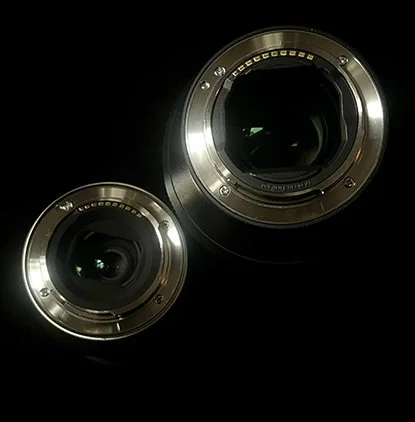WHAT IS A CAMERA MOUNT?
A camera mount serves as the interface between the camera body and the lens, allowing them to communicate ensuring a secure connection. Learning about different camera mounts is essential for understanding compatibility between your specific camera and lens devices.
Below, is a brief overview of some common DSLR and Mirrorless camera mounts.
@ Leticia Valdez Fotografia
Lens Mounts
Sony E Mount: Found on Sony's mirrorless cameras, the E mount is known for its versatility and compatibility with various lenses, including those from other manufacturers via adapters.
Sony FE Mount: Designed for Sony's full-frame mirrorless cameras, FE lenses are optimized for the larger sensor size and offer high-quality performance.
Canon EF/EF-S Mount: Used primarily by Canon DSLR and mirrorless cameras, EF lenses are designed for full-frame sensors, while EF-S lenses are designed for APS-C sensors.
Canon RF Mount: Introduced with Canon's full-frame mirrorless cameras, RF lenses are designed for high performance and compatibility with the RF mount system.
Nikon F Mount: Utilized by Nikon DSLR cameras, this mount has been in use since 1959, offering compatibility with a wide range of lenses.
Nikon Z Mount: Found on Nikon's full-frame mirrorless cameras, Z mount lenses offer outstanding optical quality and compatibility with the Z mount system.
Micro Four Thirds (MFT) Mount: Used by Olympus and Panasonic mirrorless cameras, MFT lenses are smaller and lighter due to the smaller sensor size.
Fujifilm X Mount: Exclusive to Fujifilm mirrorless cameras, X mount lenses are renowned for their exceptional optical quality and retro design.
Leica M Mount: Utilized by Leica rangefinder cameras, M mount lenses are known for their superb craftsmanship and optical performance.
Pentax K Mount: Employed by Pentax DSLR cameras, K mount lenses offer compatibility with a wide range of Pentax cameras and accessories.
Understanding the characteristics of camera mounts can help photographers make informed decisions when selecting cameras, lenses, and accessories for their specific needs and preferences. I hope this brief introduction to camera mounts is helpful when considering camera equipment.
As always, best of luck!
Reach out! Drop a line and share what type of content you'd like to see on this blog.

